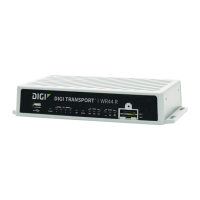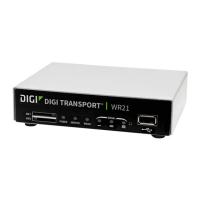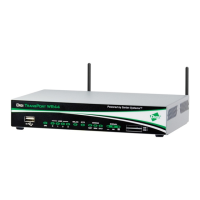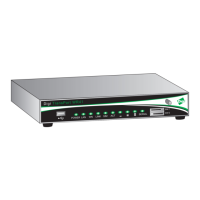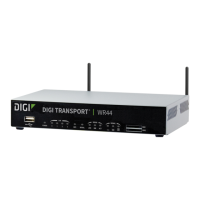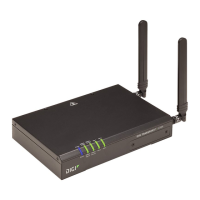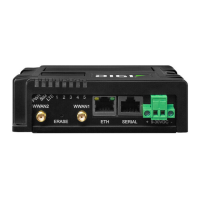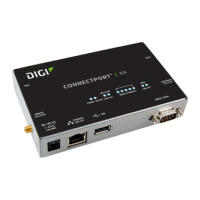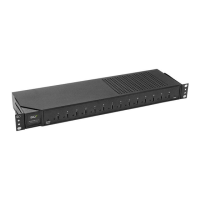Configuring network interfaces Configure Ethernet interfaces
Digi TransPort® Routers User Guide
179
Configure Ethernet interfaces
É
Web
Go to Configuration > Network > Interfaces >Ethernet.
The Configuration > Network > Interfaces > Ethernet page displays configuration pages for each of
the available Ethernet instances on the router. Each page allows the user to configure parameters
such as the IP address, mask, gateway, and others.
On routers with only one Ethernet port, if more than one Ethernet instance exist these are treated as
logical Ethernet ports. You can use these instances to assign more than one Ethernet IP address to a
router.
On routers with more than one physical Ethernet port, the Ethernet instances refer to the different
physical Ethernet ports. These routers can be configured for either HUB mode or Port Isolate mode.
In HUB mode all the Ethernet ports are linked together and behave like an Ethernet hub or switch.
This means that the router will respond to all of its Ethernet IP addresses on all of its ports (as the
hub/ switch behavior links the ports together).
In Port Isolate mode, the router will only respond to its Ethernet 0 IP address on physical port LAN 0,
its Ethernet 1 IP address on physical port LAN 1, etc. The router will not respond to its Ethernet 1
address on port LAN 0 unless routing has been configured appropriately.
When configured for HUB mode it is important that no more than one of the router’s ports is
connected to another hub or switch on the same physical network. Otherwise an Ethernet loop can
occur. The default behavior is HUB rather than Port Isolate.
VLAN tagging is not available when the router is configured for Port Isolate mode.
IPv6 addressing support on Ethernet interfaces
TransPort routers support IPv6 addressing on Ethernet interfaces only, and on a limited number of
Ethernet interfaces. For more information, see Configure IPv6 addressing support.
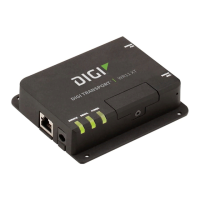
